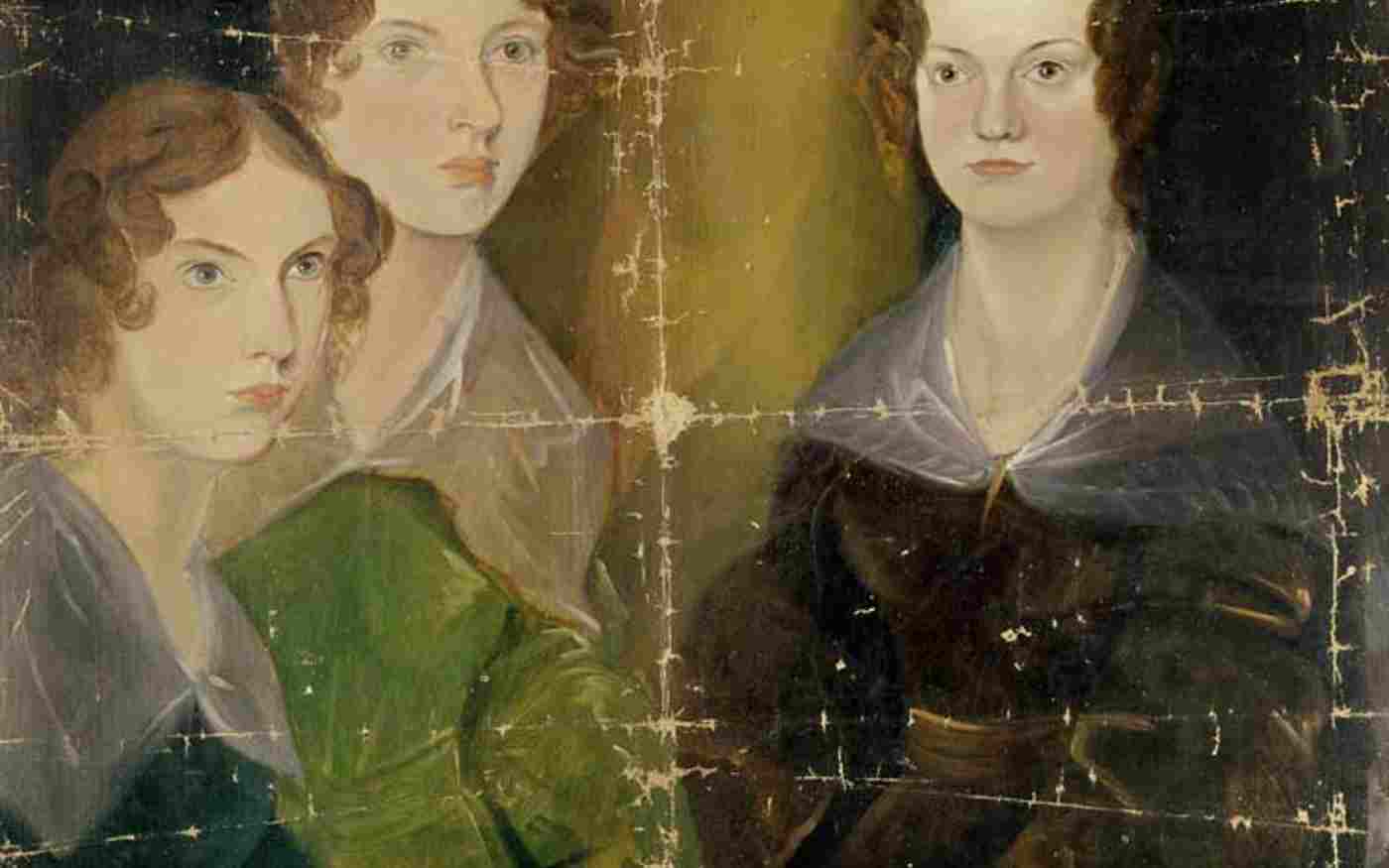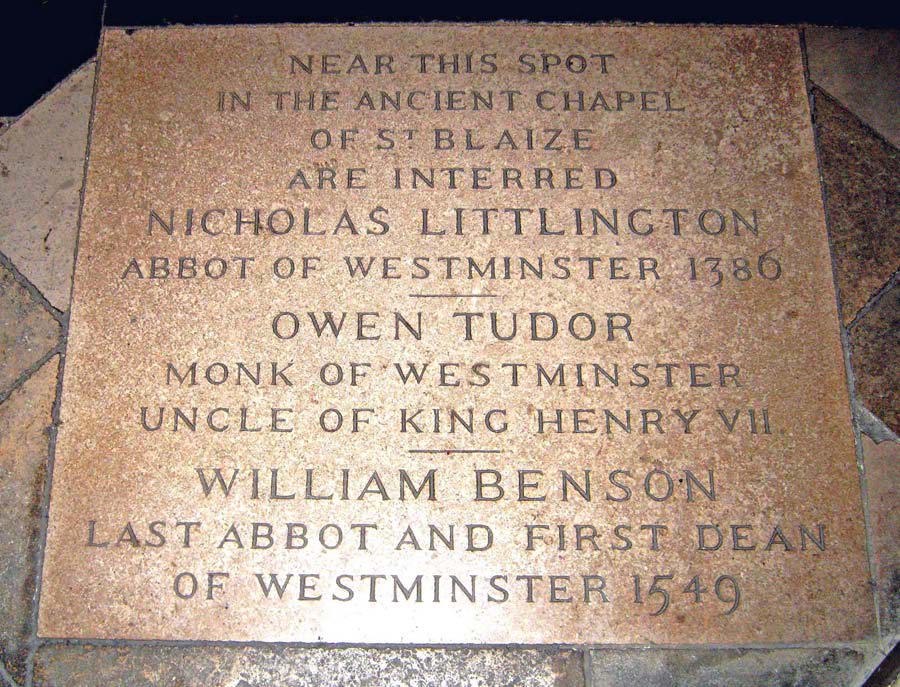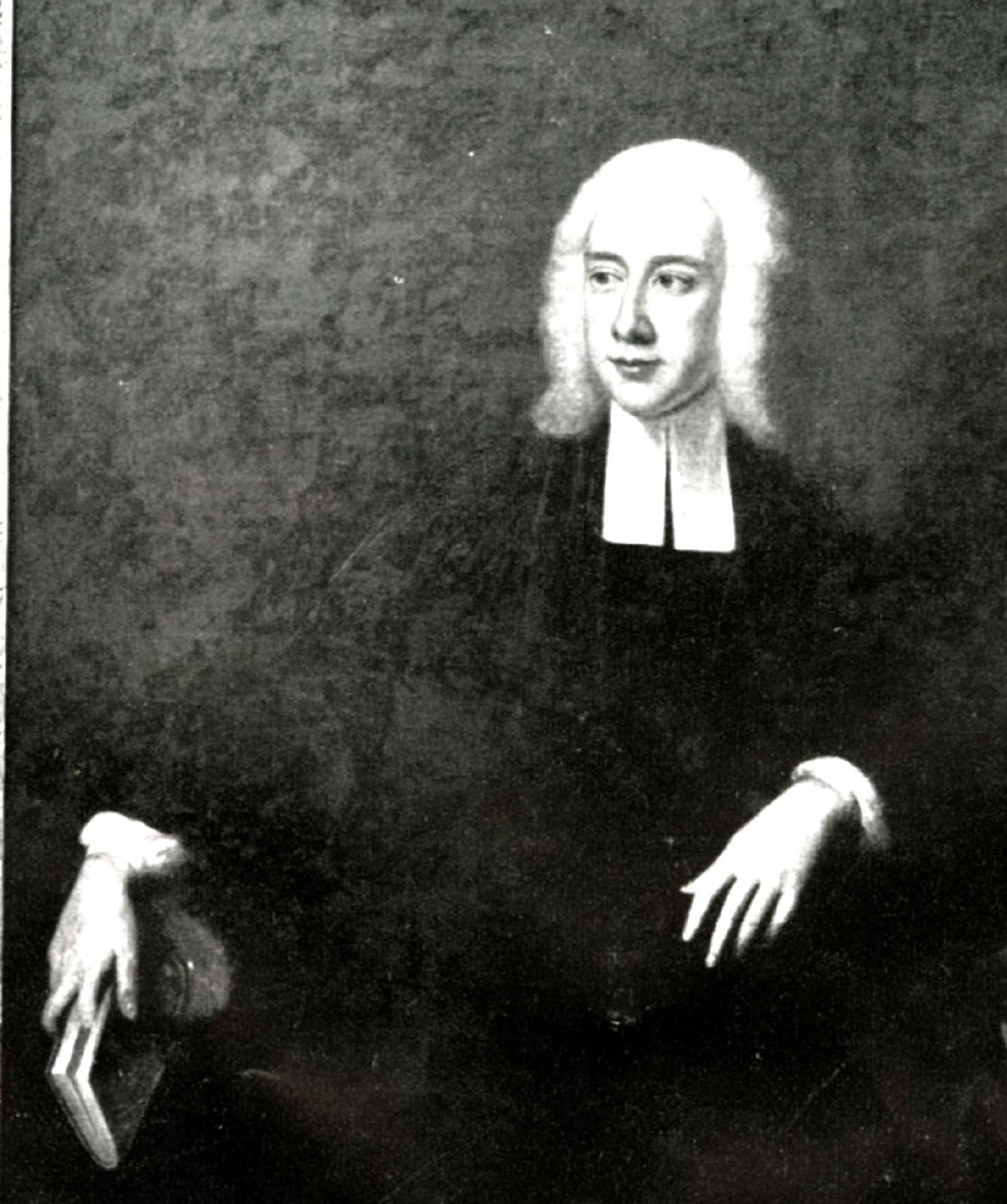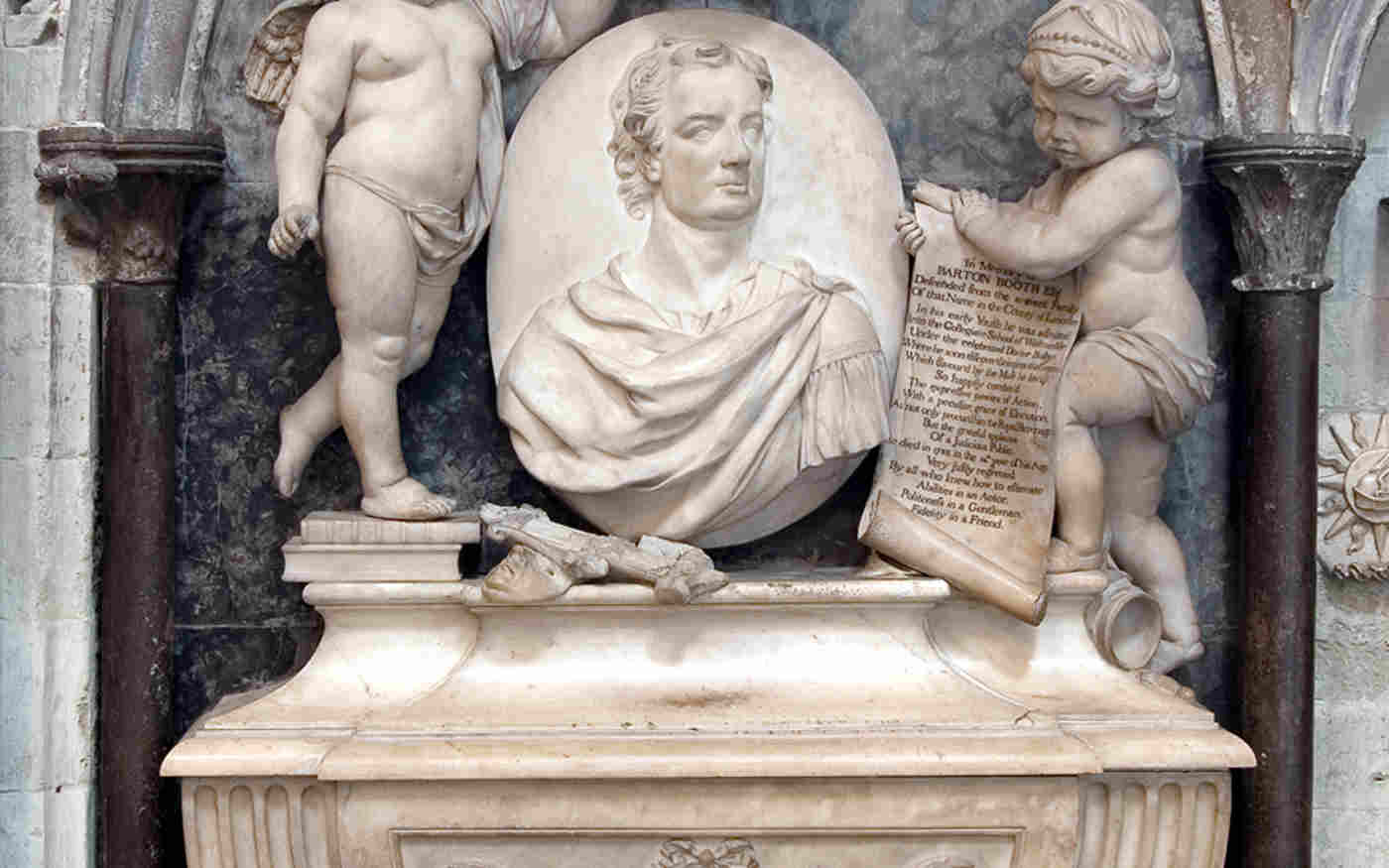Geoffrey Chaucer is buried in the south transept (or south cross) of Westminster Abbey, now known as Poets' Corner. As the author of The Canterbury Tales Chaucer is, next to Shakespeare, perhaps the most famous English poet, and is often referred to as "The Father of English Poetry".
His life
He was born between 1340 and 1343, son of John Chaucer, a London vintner, and Agnes (Copton). Geoffrey began his career in the service of Lionel, third son of King Edward III, and held various offices in the king's household, travelling abroad on several occasions. His patron and friend was John of Gaunt, Duke of Lancaster, another son of the King. On the death of John's first wife Blanche Chaucer wrote his poem The Book of the Duchess. Gaunt's third wife Katherine was said to have been a sister of the poet's wife.
Chaucer held the post of Clerk of the King's Works at the Palace of Westminster for a short time. He was a writer on astronomy, and made reference to the science and medicine of the day in his Tales.
Geoffrey married Philippa Roelt (or Roet). Their son Thomas was a rich, distinguished man and Thomas' daughter Alice became Duchess of Suffolk (died 1475). Thomas died in 1434 and is buried at Ewelme church in Oxfordshire with his wife Matilda and daughter Alice de la Pole.
Geoffrey Chaucer: his life, memorial and poetry
Burial
In December 1399 Chaucer was granted the lease of a tenement in the garden of the Lady Chapel of Westminster Abbey, for a term of 53 years at a yearly rent of fifty three shillings and four pence. The site of this garden is now covered by the enlarged Lady Chapel built by Henry VII in the early 16th century. (The lease still survives in the Abbey archives).
However, the poet died on 25th October 1400 and probably because he died in his house so near to the Abbey and was still in royal favour, he was buried at the entrance to the chapel of St Benedict, in the south transept of the Abbey. The plain slab which marked his grave was apparently sawn up when a monument to John Dryden the poet was erected there in 1720. On a pillar nearby hung a lead plate with an inscription on it written, according to William Caxton, by a poet called Surigonius of Milan.
Monument
It was not until 1556 that the present grey Purbeck marble monument was erected to Chaucer's memory by another poet, Nicholas Brigham (Brigham lived in the precincts of the Abbey on the site of the almshouses and his young daughter was buried in the Abbey). It is thought that he may have purchased this monument from one of the churches in the city of London which had been dissolved by order of Henry VIII. At the back of the monument was once painted a portrait of Chaucer and in the 18th century traces could also be seen of another figure, possibly that of Brigham. Originally above the tomb were the arms and crest of Chaucer but this was destroyed when the monument to John Roberts was inserted in the 1770s, destroying the arcading above.
In 1866 the decayed lettering of the inscription was discovered when the tomb was cleaned. Nearly all the engraved letters were found and re-painted. The Latin inscription can be translated as follows:
Of old the bard who struck the noblest strains
Great Geoffrey Chaucer, now this tomb retains.
If for the period of his life you call,
the signs are under that will note you all.
In the year of our Lord 1400, on the 25th day of October.
Death is the repose of cares.
N.Brigham charged himself with these in the name of the Muses
1556
William Camden, in his guide to Westminster Abbey published in 1600, says that the bones of the poet were transferred to this tomb. Chaucer's coat of arms is painted twice on the monument ("party per pale argent and gules, a bend counter changed", ie. a shield with one half silver and one half red with a bend across it.) Around the ledge of the tomb there was said to have been the following Latin words on a brass strip, translated as "What once I was some fame perhaps may tell; if not, for earthly glories die away, read this monument".
Memorial window
A stained glass window, designed by J.G.Waller, depicting scenes from The Canterbury Tales was erected above his monument in 1868. This was destroyed by blast in the Second World War and no glass from it remains. It was the gift of Dr Nathaniel Rogers of Westminster. A cartoon of a panel from this is in the Abbey collection.
When Edmund Spenser, the Elizabethan poet who died in 1599, was buried near to Chaucer, the concept of a "Poets' Corner" in the Abbey was begun although that name does not appear in print until 1733 (in a poem published in Thomas Fitzgerald Poems on Several Occasions).
From 1586, by the will of John Varnham, gardener of Westminster, a yearly distribution (or dole) of money to the poor of the parish of St Margaret's Westminster was to be distributed at Chaucer's tomb. It is not clear why his tomb was chosen for this purpose but as it was near the door into Poets' Corner at that date and there was a flat top to the monument it may have just been convenient to access by parishioners and set out monies.
Further reading
Derek Brewer: "Chaucer and his World", 1978, re-issued 1992
James Wilkinson "Poets' Corner" available from Westminster Abbey shop
Oxford Dictionary of National Biography 2004
www.historyofparliamentonline.org
Brigham's will is at The National Archives, Kew, Surrey and he also has an entry in the ODNB. His young daughter Rachel was buried in the Abbey 21st June 1557.
A design for the window is in the London Borough of Lambeth archives

This image can be purchased from Westminster Abbey Library
Image © 2025 Dean and Chapter of Westminster

This image can be purchased from Westminster Abbey Library
Image © 2025 Dean and Chapter of Westminster

This image can be purchased from Westminster Abbey Library
Image © 2025 Dean and Chapter of Westminster










